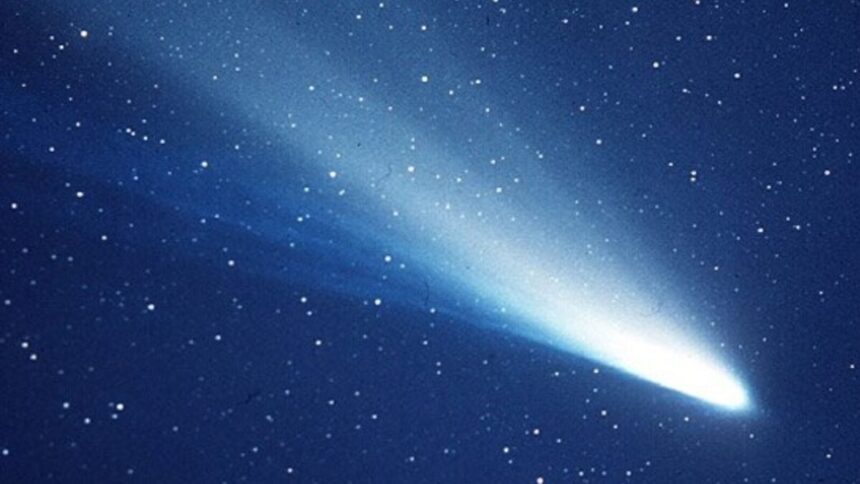Roughly 12,800 years ago, as Earth was emerging from its last great ice age, temperatures in the Northern Hemisphere suddenly plummeted back to near-glacial conditions. The cause of this abrupt shift—known as the Younger Dryas cool period—remains a mystery to this day, but new evidence may give credence to its most controversial explanation.
Researchers analyzed sediment cores extracted from the seafloor of Baffin Bay near Greenland, finding indicators of a cosmic impact event inside the layer that correlates to the Younger Dryas. The findings, published August 6 in the journal PLOS One, suggest that a comet—or its remnants—exploded in Earth’s atmosphere at around the same time that this 1,200-year-long cold snap began.
A controversial hypothesis
The study offers new support for the Younger Dryas Impact Hypothesis. In 2007, researchers proposed that fragments of a disintegrating comet or asteroid struck Earth around 12,800 years ago, triggering wildfires across North America. Such a calamity would have produced enough soot and ash to blot out the Sun and plunge the Northern Hemisphere back into a colder state.
It’s an elegant explanation, but a highly contested one. Researchers haven’t found an impact crater that would prove this event took place, so proponents largely rely on geochemical evidence found in sediment layers that date back to just before the Younger Dryas began.
Amid a lack of definitive evidence for the Younger Dryas Impact Hypothesis, most experts instead subscribe to the Meltwater Pulse Hypothesis, which suggests that a deluge of freshwater from the melting ice sheet that covered most of North America during the Pleistocene temporarily interfered with Earth’s heat-transporting ocean currents. Previous geochemical evidence from ocean sediment cores supports this idea, but scientists have yet to determine the exact route taken by this apparent flood.
Searching for impact clues
The authors of this latest study, led by University of South Carolina archaeologist Christopher R. Moore, suggest that both hypotheses may be true. “The [Younger Dryas Impact Hypothesis] is often cited as an alternative to the Meltwater Pulse Hypothesis,” Moore said in an interview with PLOS One. “What many don’t understand is that the YDIH proposes the impact event (potentially involving many thousands of impacts and airbursts globally) would destabilize the glacial ice sheet in the Northern Hemisphere, leading to the collapse of massive glacial meltwater lakes and subsequently shutting down the ocean’s conveyor belt.”
Previous studies of terrestrial sediment cores have found geochemical clues of a comet impact around the onset of the Younger Dryas, but Moore and his colleagues wanted to see whether ocean cores would contain the same clues. If so, this would dispel arguments that land-based evidence of a Younger Dryas impact event resulted from ancient human activities, according to Moore. His team uncovered multiple impact proxies that date back to the appropriate time period inside the ocean cores, including metal particles with compositions that suggest cometary origin and iron- and silica-rich microspherules.
Skepticism remains
Still, not everyone is convinced. “I do not see anything in this new paper that overcomes the chronic and ongoing problems with their previous papers,” Mark Boslough, an applied physicist and research professor at the University of New Mexico, told Gizmodo in an email. As an outspoken critic of the Younger Dryas Impact Hypothesis, he believes there are much simpler explanations that are more consistent with our current understanding of impact and airburst physics, earth science, and astronomy.
“On the surface, they report materials that sound exotic and impressive, but these are not expected results of extraterrestrial events, and I don’t think the authors seriously considered more ordinary explanations,” Boslough said.
Read the full article here












